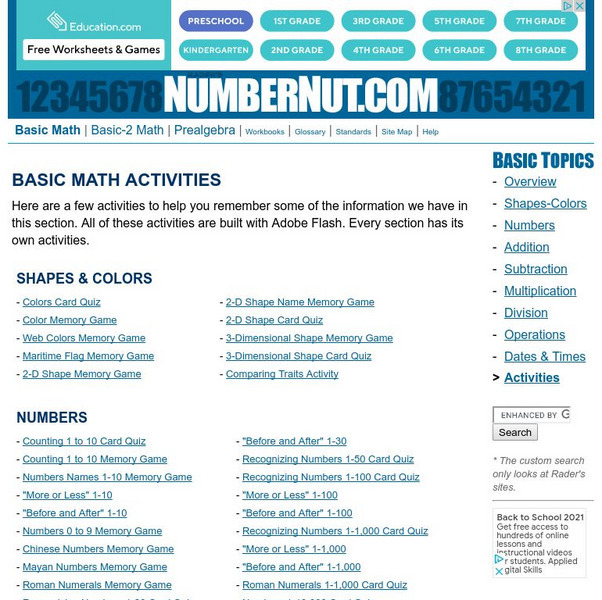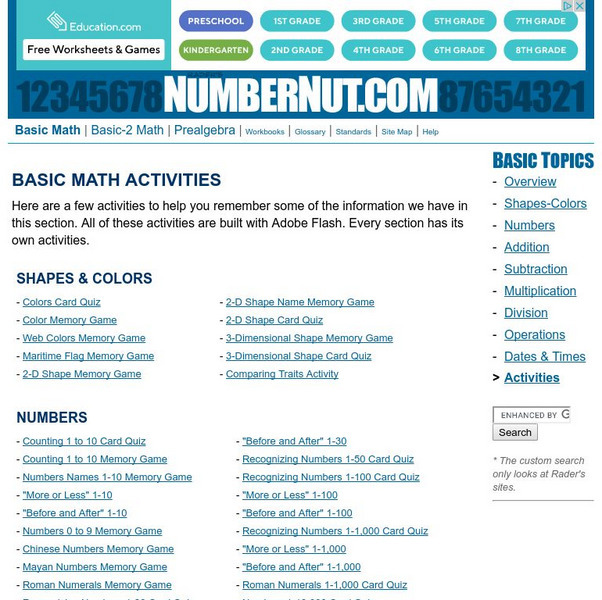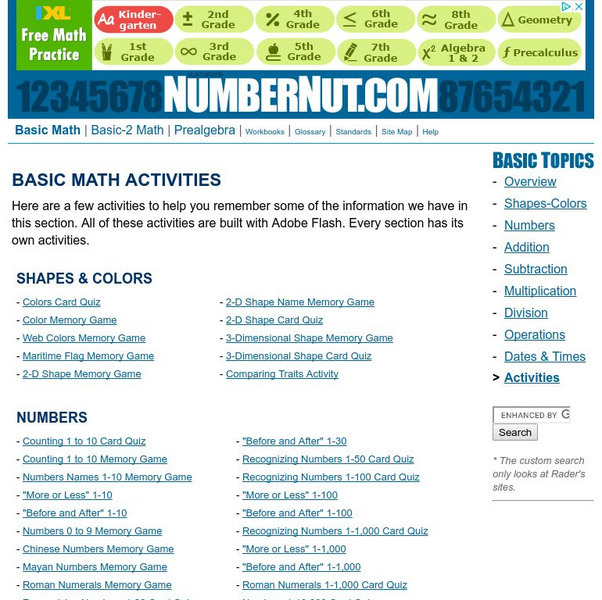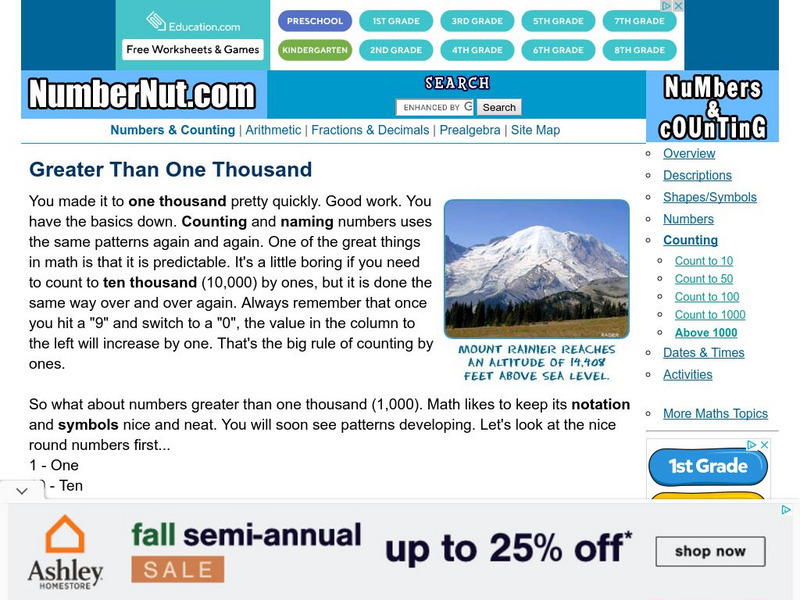Better Lesson
Better Lesson: Bigger or Smaller
Second grade students are asked to apply two complementary processes: counting and grouping. The conceptual understanding of the place value of a number and combining/separating numbers using place value, are critical aspects of...
Better Lesson
Better Lesson: Is the Statement True or False?
Second graders use their knowledge of place value to determine whether a comparison statement is true or false.
Better Lesson
Better Lesson: Larger Number Patterns
Second graders can find patterns in 4-digit numbers that will help them when counting over decades and centuries.
Better Lesson
Better Lesson: Moving Into Thousands
To make sense of numbers in the thousands, 2nd grade students need practice identifying place value positions and using place value strategies in numbers to 1,000.
Better Lesson
Better Lesson: Subtracting With Partners of 100
When subtracting ten from a 2 digit number, 2nd graders should be able to compute the answer as fluently and comfortably as do when they add ten to a 2 digit number.
Better Lesson
Better Lesson: Mentally Speaking!
Using base ten blocks and place value, 2nd graders explore how to become more fluent in adding and subtracting two-digit numbers without regrouping.
Better Lesson
Better Lesson: Our Understanding of Numbers
This lesson is an informal assessment of student understanding of the base ten system, a critical area in the Common Core.
Better Lesson
Better Lesson: We Can Guess the Number
Understanding place value is critical to the Common Core Standards for second grade. Without a concrete understanding, 2nd graders may not fully grasp the meaning of the digits.
Better Lesson
Better Lesson: Moving Along in Tens
Grouping by tens reinforces the understanding of place value
Better Lesson
Better Lesson: Identifying Tens and Ones
Second graders will be given set amount of money to add, and identify how many tens and ones.
Better Lesson
Better Lesson: Excellent Mathematical Explanations
Second graders use place value vocabulary to write excellent mathematical explanations about why a comparison statement is true or false.
PBS
Pbs Learning Media: Math + Arts: Chinese Music & Dance: More or Less
Students learn about Chinese culture and the concept of greater than and less than. After watching a student performance of a Chinese song and dance students are taught the difference between locomotor and non-locomotor motions. Students...
Louisiana Department of Education
Louisiana Doe: Louisiana Believes: Eureka Math Parent Guide: Place Value, Counting, and Comparison of Numbers to 1000
A guide to support parents as they work with their students in place value, counting, and comparison of numbers to 1000.
Other
Nearpod: Place Value: Fall Edition
For this lesson, young scholars will use base ten blocks and a place value chart to show their understanding of two-digit and three-digit numbers. They will also use place value to compare numbers.
E-learning for Kids
E Learning for Kids: Math: Sheep Farm: 3 Digit Numbers
Help Jack on his sheep farm and learn more about 3-digit numbers.
E-learning for Kids
E Learning for Kids: Math: Inca Temple: Three Digit Numbers
On this interactive website students practice various math skills using a real life scenario in a classroom. Those skills include identifying three-digit numbers, putting numbers in ascending and descending order, and rounding numbers to...
NumberNut
Number Nut: Numbers and Counting: Writing 0 9
Explains how to write the numbers from zero to nine using correct penmanship.
NumberNut
Number Nut: Numbers and Counting: Comparing Numbers 1 Through 100
This interactive site explains how to compare whole numbers and offers a 10 problem quiz for practicing the skill.
NumberNut
Number Nut: Numbers and Counting: Comparing Amounts One Through Ten Activity
Quiz where the player compares two numbers between one and ten, which are represented by numerals and dots.
NumberNut
Number Nut: Numbers and Counting: Comparing Numbers One Through Thirty Activity
Quiz where the player compares two numbers between one and thirty, and states whether the first number is less than, equal to, or greater than the second number.
NumberNut
Number Nut: Subtraction: Comparing Subtraction Differences (One Digit Numbers)
Quiz where the player must calculate the answers for two one-digit subtraction problems, and then must choose the correct symbol for comparing the differences (i.e., >, <, or =).
NumberNut
Number Nut: Numbers and Counting: Counting to 1,000
Follow the steps in the examples for place value to the thousands place and then practice the skills with the two interactive activities.
NumberNut
Number Nut: Numbers and Counting: Greater Than 1,000
Follow the steps in the examples for place value for numbers greater than 1000 and then practice the skills with the two interactive activities.
Math Is Fun
Math Is Fun: Comparing Numbers
A simple explanation of what the less than and greater than signs are, with links to games where you can practice comparing numbers.












